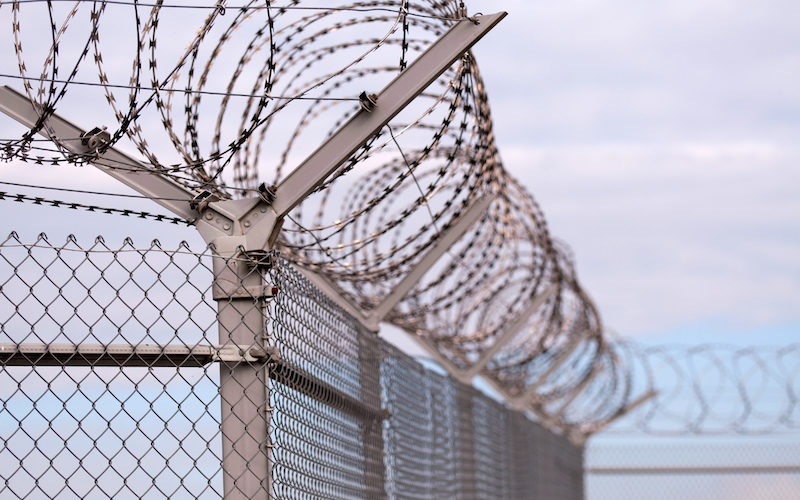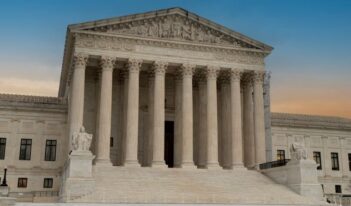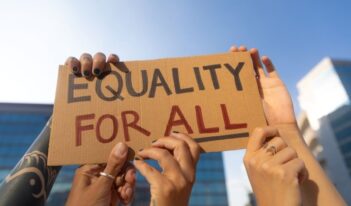
Suggested legal system reform could help inmates pursue civil rights claims.
How well are ordinary people’s interests represented in the U.S. legal system? In their important and insightful book, Rebooting Justice, Professor Benjamin H. Barton and Judge Stephanos Bibas provide a sobering answer: not well.
On the civil side, there is an enormous unmet need for legal services. On the criminal side, there is a nominal right to a government-paid lawyer whenever the prosecution of an indigent defendant results in a sentence of imprisonment, but the quality of legal representation is often woefully bad. Barton and Bibas’s description of the problem is vivid and convincing. Their prescriptions for reform deserve serious consideration.
I will focus this essay on the topic of civil justice, but with respect to a set of litigants—prison inmates—whose grievances concern both criminal and civil matters.
Inmate litigation represents a subset—but a large and important one—of the problems that Barton and Bibas seek to address. Inmate litigants usually bring their habeas or civil rights claims without a lawyer. And although commentators have disputed what proportion of inmate cases are meritorious—and the U.S. Congress has legislated on the premise that many are not—inmate suits provide a vital vehicle for prisoners to challenge both the fact and the conditions of their confinement.
Barton and Bibas starkly depict the deficits in representation of criminal defendants at trial and on direct appeal. The chances are slim that those deficits will be remedied after the fact via postconviction review of a judgment of conviction. Federal habeas corpus lawsuits provide a means for inmates to challenge errors in their original criminal proceedings. But in noncapital cases the inmates typically have no right to a lawyer in habeas suits, and inmates must navigate an intricate set of legal hurdles for a small chance at obtaining relief.
Federal civil rights lawsuits provide a way for inmates to challenge prison conditions, such as the denial of adequate medical care, abuse by prison guards, or failure to prevent attacks by other inmates. Here, too, most inmates who sue do so on their own behalf, without a lawyer.
Bringing a lawsuit is challenging for any nonlawyer. For inmates, it is more than usually so. They have lower rates of literacy and report higher rates of cognitive disabilities than the general population. Some do not speak English. They often have only limited access to sources of legal information and may lack access to computers and the Internet. They are often poor, and although there are provisions allowing poor people to file without paying filing fees, Congress has tightened the restrictions on inmates proceeding under those provisions in federal court. They cannot go to the courthouse in person to file papers or ask questions. Before suing to challenge the conditions of their confinement, they must first use any administrative processes that the prison provides for such grievances—and they must take care to comply carefully with all the requirements of those processes on pain of losing their later chance to sue in court. Although Congress created a fee-shifting statute to encourage lawyers to bring federal civil rights claims, it subsequently narrowed the availability of such fee-shifting for lawyers who bring claims on behalf of inmates.
The prospects facing an inmate litigant are daunting, but the proposals highlighted by Barton and Bibas could help.
Take for example the unauthorized practice of law. Most inmate litigants will never have a lawyer for their civil claims. But they might have the assistance of a fellow inmate who has gained expertise in the prison’s administrative grievance system and in litigating typical sorts of inmate claims.
An institution that fails to provide a “reasonable alternative” cannot constitutionally bar inmates from assisting other inmates in researching their habeas or civil rights claims; and in such instances charges of unauthorized practice of law should fail as well. A specialized course of training and certification for inmate legal assistants could help to assure the quality of the resulting advice.
Obviously, there are drawbacks to reliance on incarcerated legal specialists. They will likely lack full access to legal and factual resources, and they could risk retaliation by prison staff if they become too effective, particularly in supporting the litigation of conditions-of-confinement claims. In addition, inmates should assume that they will not be able to assert attorney-client privilege for their communications with peer legal advisors. But Barton and Bibas’s training and certification ideas could be adapted to boost the legitimacy and effectiveness of inmate legal advisors who are meeting otherwise-unmet needs.
Some excellent guidance for inmate litigants already exists in traditional format in a leading treatise by John Boston and Daniel E. Manville. Inmates with Internet access can also use the online step-by-step Jailhouse Lawyer’s Handbook published by the Center for Constitutional Rights and the National Lawyers Guild. The Administrative Office of the U.S. Courts provides a fill-in-the-blank form for habeas petitions and some federal district courts offer forms for civil rights complaints or guides for self-represented litigants or both.
What if there also existed an interactive computer program that could help an inmate build the needed documents for each step of the prison’s internal grievance process, if applicable, and then for each step in a lawsuit?
Many correctional institutions are reluctant to provide inmates with Internet access and might restrict that access for disciplinary and other reasons. But an interactive document creator might be provided in a self-contained format that functions offline and that might be accessed, for instance, on a tablet or through a dedicated kiosk. Access to court dockets or electronic filing, or both, might eventually occur through a computer connection with the relevant court. At least as an initial matter, because efforts to expand inmates’ electronic access to criminal dockets could raise concerns about the potential for exposing incarcerated cooperating defendants to reprisals, such inmate access to electronic dockets is more likely to occur on the civil side, including civil rights lawsuits, than on the criminal side. These developments will likely occur first in large institutions, and at least some of them will call for collaboration between court clerks’ offices and particular prisons.
Barton and Bibas indict our legal system, but they also point out tools for its rehabilitation. In correctional institutions, as in society at large, that rehabilitation holds the possibility of positive change.
This essay is part of an eight-part series, entitled Revamping the American Justice System.




